Examining 'Redo of Healer': Themes of Revenge and Redemption
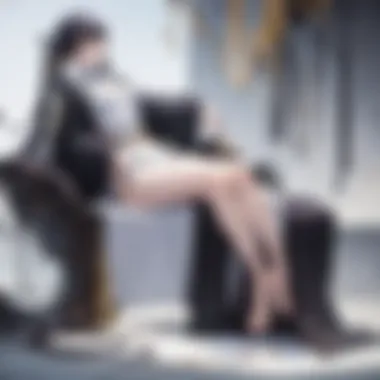
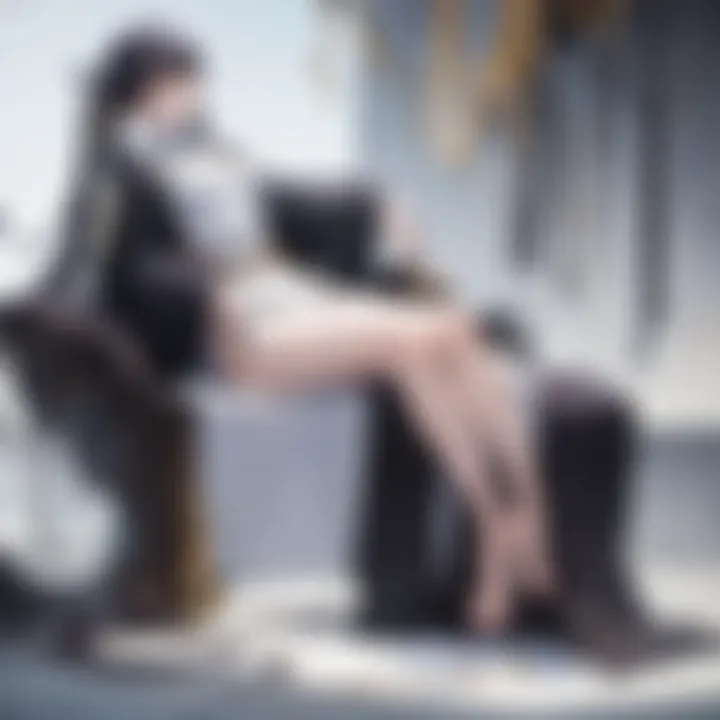
Intro
In the increasingly diverse landscape of anime, 'Redo of Healer' stands as a complex piece that challenges viewers with its provocative themes and narrative style. The series has not only captivated audiences but has also ignited spirited debates around topics such as revenge, morality, and the concept of healing. This article aims to dissect these layers, offering insights into character arcs, storytelling techniques, and the cultural dialogue that has emerged in response to the series.
As we journey through the following sections, a structured analysis will unfold, one that dives deeply into the themes and motifs that permeate 'Redo of Healer', as well as examining its artistic merits. By engaging with the work in this way, we can better grasp its unique position in the anime world and how it reflects broader societal questions.
Series Overview
Synopsis and Premise
'Redo of Healer' ventures into a narrative milieu laden with dark fantasy elements. The plot revolves around Keyaru, a healing mage who suffers cruelly at the hands of others. Trust and betrayal serve as pivotal touchstones, culminating in a journey where Keyaru utilizes his abilities not only to heal but also to exact revenge upon those who wronged him. This tale of retribution is not merely a surface-level exploration of violence; it probes deeper into the psychological effects of trauma and vengeance, making viewers reflect on the ramifications of one's actions.
Notable Characters
Keyaru's evolution is at the heart of the story, but he is not alone in this gritty landscape. A few notable characters include:
- Kureha: A companion who plays a crucial role in aiding Keyaru on his quest for revenge and self-discovery.
- Flare: An antagonist whose manipulative nature embodies the darkness Keyaru must confront.
- Eternal: This character serves as a reflection of both the choices Keyaru makes and the possible paths he might take.
Each of these characters, complex and multifaceted, contributes to the unfolding drama and highlights the series' themes around power, suffering, and the consequences of revenge.
Themes and Motifs
Major Themes Explored
'Redo of Healer' delves into numerous themes:
- Revenge: The primary narrative drive. Keyaru’s quest shifts the focus from traditional heroism to a darker side of human nature.
- Healing and Trauma: The notion of healing here is not limited to physical capacity. Instead, it navigates through the scars left by betrayal and pain.
- Morality: The series continuously beckons viewers to consider what actions can be justified in the name of revenge.
A vivid tension exists in Keyaru's struggles, prompting viewers to question the morality of his decisions.
Symbolism in Storytelling
Symbolism in 'Redo of Healer' acts as a guiding framework throughout the plot. Healing magic, for instance, symbolizes both the potential for restoration and manipulation. Keyaru's journey can be interpreted as an allegory for personal empowerment—using his abilities not just to heal but to reshape the world around him.
Understanding 'Redo of Healer'
The series 'Redo of Healer' has emerged as a significant subject in the realm of anime, sparking debates and discussions among viewers and critics alike. Understanding the essence of this series is crucial not only for grasping its controversial themes but also for evaluating its impact within the anime community.
This narrative delves into the complex dimensions of revenge, healing, and morality that shape the storyline, providing insight into the psychological and emotional undercurrents at play. By taking a closer look at this anime, we uncover layers of character motivations and societal reflections that resonate with many viewers, especially those seeking deeper themes in their entertainment.
Overview of the Series
'Redo of Healer' tells a story that ventures into darker territories frequently unexplored in mainstream anime. First adapted from a light novel series, its animated version showcases a raw perspective on how trauma can shape behavior and decisions. The main character, Keyaru, goes through extreme suffering that lays the groundwork for his quest for revenge and ultimately his own concept of healing.
Unlike typical hero narratives where the protagonist emerges victorious in a crescendo of honor and valor, this anime challenges those notions by shedding light on the extreme lengths individuals may go when pushed to their limits.
In essence, while it may be easy to dismiss 'Redo of Healer' as mere brutality, understanding its narrative structure and thematic implications reveals a confrontation with suffering and justice that can broaden our understanding of character motivation in animated storytelling.
Synopsis and Plot Overview
At its core, the plot centers on Keyaru, a healer who experiences profound betrayal and abuse at the hands of those he trusted. This betrayal becomes the catalyst for his transformation from victim to avenger. The premise unfolds as Keyaru discovers the power of "resetting" his life after being subjected to horrific events. With the ability to reverse time, he meticulously orchestrates his path of vengeance against those who wronged him. Notably, each episode unveils his psychological struggles and the weight of his choices as he navigates a world steeped in both magic and moral ambiguity.
The pacing of the plot is deliberate, allowing viewers to grasp the gravity of Keyaru's transformations while also ensuring that the underlying themes of agency and retribution take center stage. As the narrative progresses, it starkly contrasts the stark cruelty with moments that challenge the viewers to question the nature of healing and forgiveness.
"Healing isn't just about mending wounds; it's about reclaiming power amid chaos."
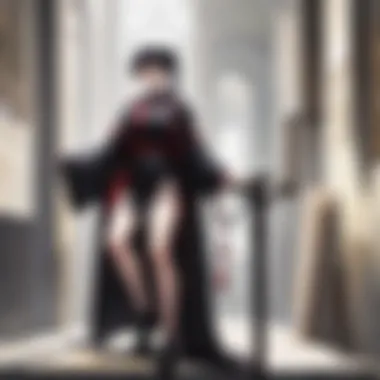
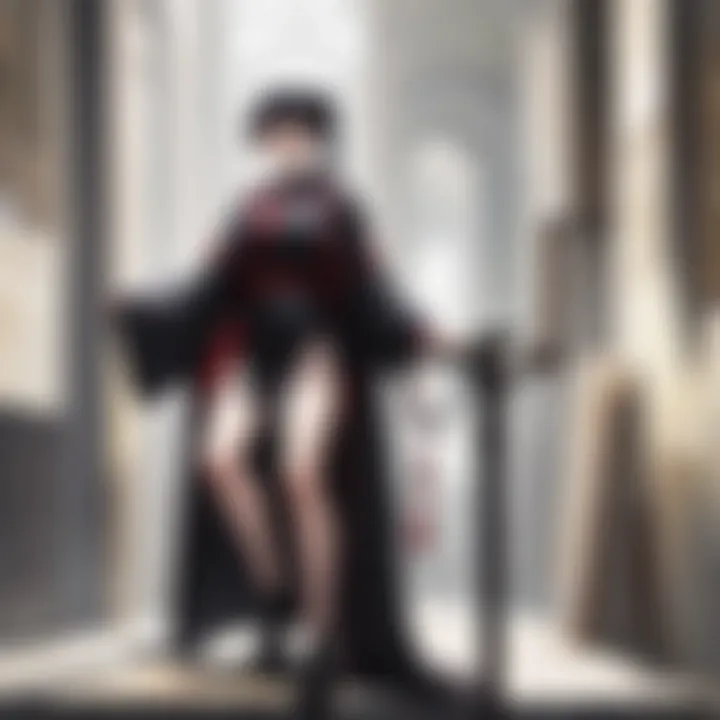
This statement encapsulates the philosophical underpinnings of the series, prompting viewers to reflect on their perceptions of strength and weakness.
The nuances of Keyaru's journey ultimately compel audiences to explore their own beliefs regarding justice, trauma, and what it means to be healed or to heal others. In navigating the morally grey landscape of the series, the viewer is left to ponder their own values amidst the unfolding drama.
Key Themes Explored
Delving into the nuances of Redo of Healer, it becomes evident that its thematic framework plays a pivotal role in shaping the viewer's experience. This anime doesn't merely tell a story; it invites viewers to grapple with profound questions about revenge, personal agency, and morality in a world where fantasy often collides with grim realities. Each theme unfolds layers of complexity, nudging the audience to reflect on not just the narrative, but also their values and perceptions.
Revenge as a Central Motif
At its heart, Redo of Healer revolves around the theme of revenge, which is not just a passing notion but rather a driving force behind the protagonist's actions. The narrative follows Keyaru, whose desire to retaliate against those who wronged him fuels the plot. Unlike many other stories that might romanticize vengeance, this series paints it in stark colors, revealing both the temptations and the hollow victories associated with seeking retribution.
Revenge can offer a sense of power, yet it comes with a hefty price. In Keyaru's journey, we witness how his obsession leads him to commit morally questionable acts, often causing viewers to question their own stance on revenge. Is there any true satisfaction to be found in it? Or does it ultimately lead to a perpetual cycle of pain? This interplay of motives keeps the audience engaged and evokes a range of emotions, adding to the series’ depth.
Concepts of Healing and Agency
Healing is a multifaceted theme in Redo of Healer. The very title alludes to the protagonist's unique ability, which intertwines with his quest for vengeance. Healing in his context isn’t merely about physical restoration, but also about addressing emotional and psychological wounds. Keyaru's journey embodies a paradox, as the power to heal forges paths to both salvation and destruction.
Moreover, the theme of personal agency stands out prominently. Keyaru's actions can be seen as a reclamation of his autonomy, as he transforms from a victim into a figure of control. However, this raises questions about the ethical implications of his choices. The series challenges viewers to ponder the extent to which one’s agency can justify immoral decisions.
"With great power comes great responsibility."
This timeless adage rings true in Keyaru's journey, compelling viewers to consider the repercussions of wielding power without keen moral consideration.
Morality Within a Fantasy Framework
Redo of Healer immerses its audience in a rich fantasy landscape, yet it does so while deliberately destabilizing traditional moral frameworks. The dichotomy between good and evil becomes blurred, forcing characters—and by extension, the viewers—to navigate a morally ambiguous terrain. As Keyaru steps deeper into his quest for vengeance, is he becoming the hero of his own story or simply another villain?
The anime provokes thought regarding how fantasy narratives often sidestep moral implications. It pushes one to confront the uncomfortable reality that in many stories, the lines between heroism and villainy can be dangerously thin. Viewers might find themselves sympathizing with Keyaru, even as he acts in ways that defy their sense of justice. This moral complexity provides fertile ground for discussions surrounding ethics in storytelling and prompts a re-examination of familiar tropes.
Character Development
The character development in 'Redo of Healer' is essential as it delves deeply into the motivations, transformations, and the psychological aspects of the characters involved. This aspect contributes greatly to the narrative complexity, making the audience not only watch the events unfold but also feel a sense of connection to the characters’ journeys. In a series that explores the dark and often controversial themes of revenge, healing, and trauma, observing how characters evolve provides insight into their choices and the implications of those choices. Understanding their development, therefore, allows viewers to engage with the material on a more profound level.
The Protagonist's Journey
Transformation through Adversity
One key aspect of transformation through adversity is how the protagonist, Keyaru, endures endless suffering before finding his path to revenge. This transformation isn’t just physical; it’s deeply tied to his mental state and identity. The intensity of his experiences shapes him into a character motivated by vengeance, thereby creating an intriguing exploration of how personal trials can morph one’s character.
The intriguing characteristic of this transformation is its relatability. Many viewers can see their struggles reflected in Keyaru’s journey, even if the circumstances are exaggerated. This relatability makes the transformation feel more current and engaging. The unique feature of this arc lies in its raw authenticity, showcasing both the highs and dark lows of revenge. However, it also opens a discussion about the consequences of allowing one’s suffering to dictate their actions, illustrating a dangerous path that may resonate with viewers in real life.
Psychological Impacts of Trauma
The psychological impacts of trauma are another profound element explored in the series. Keyaru’s experiences shape not just his desires and decisions, but also his mental health. The narrative doesn’t shy away from portraying the scars left by trauma, revealing how it can lead to resentment and an unyielding need for retribution.
This aspect highlights a notable characteristic: it forces viewers to confront the often-silenced topic of mental health in storytelling. It serves as a reminder of the repercussions unresolved trauma can have on someone, making it a relevant topic in the discourse around character depth. The uniqueness of this portrayal lies in its honesty and grit, providing a stark contrast to more sanitized versions of trauma often seen in media. However, it raises the question of whether it romanticizes suffering instead of fostering understanding.
Motivations and Goals
Motivations and goals of Keyaru reveal the complexity behind his intentions. Initially, his drive stems from a desire to heal and enact revenge. However, as the series unfolds, those motivations evolve, illustrating how power can manipulate one's goals.
The key characteristic of this theme is its fluidity. Goals in 'Redo of Healer' aren’t static; they shift based on personal growth and external influences. This transition in motivations enriches the narrative, showcasing the multifaceted nature of human desires. The unique feature of this exploration is its layered complexity, where the audience understands that revenge does not solely spawn from hate but can also stem from a desire for justice. On the downside, this complexity can make it harder for viewers to identify with Keyaru, as his journey oscillates between villainy and a tragic hero's tale.
Supporting Characters and Their Roles
Allies and Their Influences
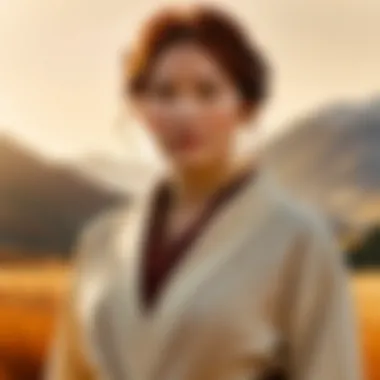
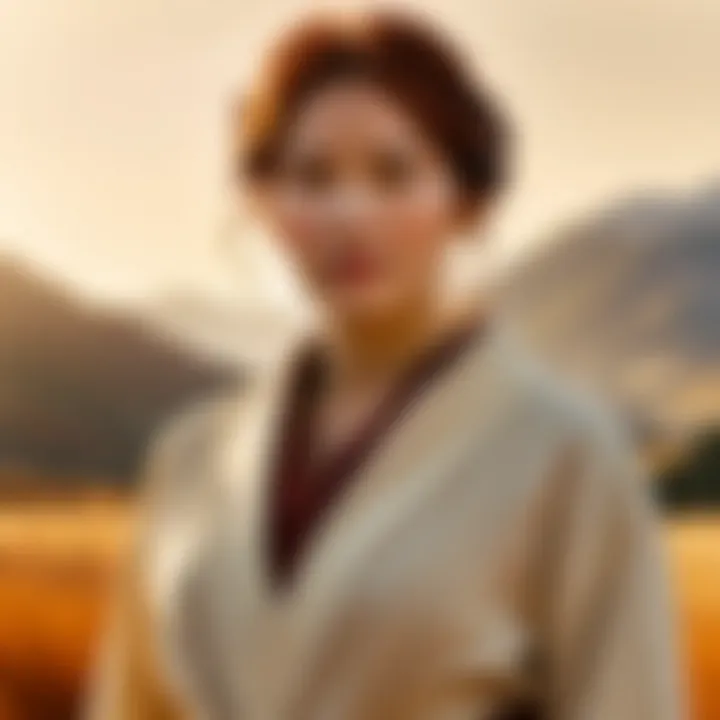
The allies in 'Redo of Healer' play a crucial role in shaping Keyaru’s journey, both positively and negatively. Characters like Freia and Setsuna contribute various dimensions to his development, providing necessary support but also challenging his views on revenge and morality. Their influences represent different perspectives on suffering and healing, creating a rich tapestry that enhances the narrative.
The noteworthy characteristic of allies is their diverse backgrounds, which open up discussions about teamwork, trust, and betrayal. This complexity is beneficial as it reflects real-life scenarios where friendships can shift and evolve. The unique feature here stems from the special relationships that can dramatically alter key motivations and directions within the plot. However, the presence of several allies can sometimes dilute the focus on Keyaru, leading to overcrowded storytelling.
Antagonists: A Study in Contrast
In 'Redo of Healer', the antagonists present a significant contrast to the protagonist, enhancing his character development through opposition. Each antagonist poses unique challenges that force Keyaru to confront his own values and decisions. Their motivations often provide insight into broader themes of morality and retribution, making them essential to the overall narrative.
The distinct characteristic of these antagonists is their multifaceted nature; they aren't simply evil for the sake of it. Each has their motives that create a rich background story, making them more believable and engaging. This complexity serves as a beneficial device for deepening the main themes of the show. The unique aspect of these antagonists is their contribution to Keyaru's growth, providing critical obstacles that ultimately determine his fate. However, this layered characterization can sometimes shift the focus from the protagonist’s journey, which may leave viewers feeling unsettled.
Character Arcs and Evolutions
The character arcs in 'Redo of Healer' are marked by significant evolutions, particularly Keyaru’s own transformation from a victim to someone seeking control over his life and the lives of others. This progression showcases an interesting interplay between personal growth and the theme of revenge.
One key aspect is the dynamic nature of these arcs. Characters experience transformations that carry emotional weight, making them compelling to watch. The beneficial aspect of these evolutions is how they challenge traditional notions of heroism and villainy. The unique feature of these arcs lies in their unpredictability, which adds tension and keeps viewers guessing about what choices characters will make next. Nonetheless, this unpredictability can sometimes confuse viewers as they try to reconcile character behaviors with past actions.
Narrative Techniques
The narrative techniques employed in Redo of Healer are instrumental in shaping its themes and the audience's experience. They are the gears that turn the engine of storytelling, enabling the series to explore complex layers like revenge, agency, and morality. Solid narrative techniques are not just about telling a story—they serve to engage the audience on an emotional level, guide them through the characters’ journey, and provide insights into the psychological implications of their actions.
One notable aspect is the structure of storytelling, which gives the series its unique flair. This is often like peeling the layers of an onion; each revelation adds depth to the narrative and intensifies the viewer's understanding. As we delve into the specifics, we'll explore how elements such as flashbacks, foreshadowing, pacing, and tension contribute to a gripping experience.
Storytelling Structure
The structure of storytelling in Redo of Healer is far from linear; it's a complex tapestry woven with threads of time, memory, and motivation. From the outset, the series implements a non-linear approach that keeps the audience guessing. Instead of sticking to a straightforward timeline, it zigzags through pivotal moments in the protagonist's life, revealing motivations and background that deepen our understanding of their psyche.
This structure not only reflects the chaotic nature of the protagonist's experiences but also mirrors the overarching theme of trauma. By jumping between different timelines, viewers catch glimpses of the protagonist’s past, allowing them to appreciate the transformation that occurs as a result of adversity. Consequently, the storytelling structure becomes a voice for the unspoken anguish that permeates each character's motivations.
Use of Flashbacks and Foreshadowing
Flashbacks serve as a critical element in Redo of Healer, often acting as windows into the protagonist's mind, revealing experiences that shape their current decisions. In exploring trauma and recovery, these flashbacks lend weight to the narrative. They provide context and a clearer lens through which the audience can interpret present actions.
Conversely, foreshadowing creates a sense of anticipation that is apt to keep viewers on the edge of their seats. The series skillfully drops hints about future conflicts and resolutions, establishing an underlying tension. This not only heightens engagement but also prepares the audience for the inevitable showdown—one that intertwines moral conflicts and personal vendettas, making each twist impactful. In essence, both flashbacks and foreshadowing are not merely stylistic choices; they serve to stitch together a richer narrative quilt that resonates on multiple levels.
Pacing and Tension Building
Pacing is another key technique that Redo of Healer masterfully employs. The rhythm of the narrative dictates how viewers experience the unfolding story. At times, the pacing is deliberate and reflective, allowing the audience to absorb emotional burdens and philosophical inquiries that the characters grapple with. Then, suddenly, it can shift gears, launching predictably into scenes filled with climactic intensity and conflict. This balance of pacing not only maintains interest but cleverly plays into the emotional stakes of the story.
Moreover, tension building becomes a crucial strategy in reinforcing the themes of revenge and morality. It keeps the audience invested in the characters’ journeys. When the protagonist faces imminent danger or impending decisions, the sense of urgency is palpable. This interplay between tension and pacing ensures that viewers feel the stakes, making each revelation and every confrontation feel consequential. Delivering an experience that is both thrilling and thought-provoking ensures that the narrative techniques in Redo of Healer invite deeper contemplation of its themes.
"Narrative techniques in Redo of Healer act as vital tools, guiding both the plot and character development while provoking introspection about healing and revenge."
Cultural Implications
When discussing 'Redo of Healer', one cannot ignore the ripple effects this anime has had across various cultures. The cultural implications of the series are significant, providing insight into societal norms, beliefs, and critiques within a contemporary framework. It’s not just a show that entertains but also challenges viewers to confront uncomfortable ideas about justice, morality, and personal agency.
Reception in Japan and Globally
In Japan, 'Redo of Healer' stirred a pot of both praise and dissent. It appealed to a segment of the audience drawn to its dark themes, seen as a daring exploration of revenge. Many found resonance with the protagonist’s struggle, viewing his journey as a commentary on the complexities of victimhood and healing.
Globally, the reception was a mixed bag. While some Western viewers embraced the raw narrative for its audacity, others were put off by the explicit content and themes. These differing perspectives often boil down to cultural context—what some see as bold storytelling, others may perceive as gratuitous. This variance is crucial for understanding how cultural norms shape our interpretations of media.
Discourse Around Representation
The series has ignited conversations about representation in anime, particularly concerning the portrayal of trauma and sexuality. Critics suggest that the depiction of female characters often leans towards problematic stereotypes, leading to uncomfortable discussions about the implications of such portrayals. However, supporters of the series argue that it reflects darker aspects of human nature and that its characters, whether flawed or brutal, are essential to the narrative.
These discussions about representation are vital, especially in an age where media is under intense scrutiny for how it influences societal views. Engaging in this discourse encourages audiences to question the narratives they consume and consider the weight of the stories being told.
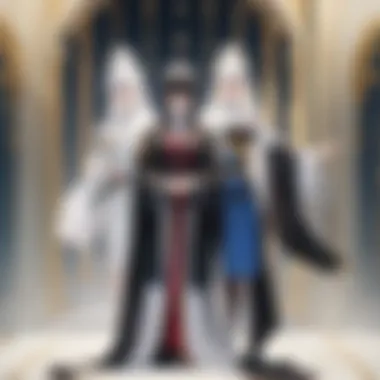
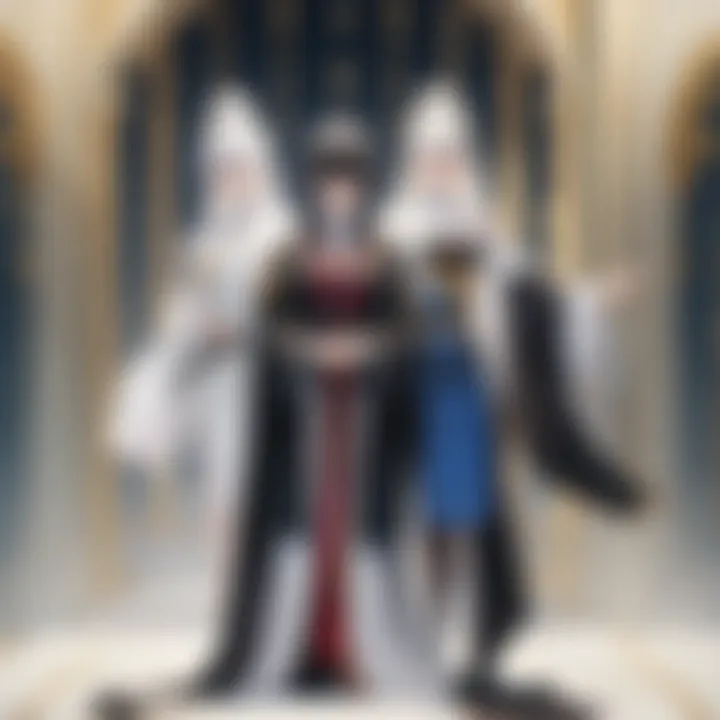
Comparisons to Other Works
-#### Similar Themes in Different Series
When putting 'Redo of Healer' under the microscope, its themes of revenge and healing can be seen in works like 'Sword Art Online' and 'Berserk.' These stories tackle similar battles between darkness and redemption but do so through varying lenses. In 'Sword Art Online', the prospect of escaping a digital prison serves as a backdrop for personal growth, whereas 'Berserk' offers a more visceral exploration of vengeance.
The comparison underscores a key characteristic in these narratives: they all delve into the consequences of trauma, albeit in distinct styles. This thematic overlap enriches the discourse on how different authors approach the challenges characters face. Understanding these nuances provides greater insight into how cultural background influences an anime’s message and reception.
-#### Contrasting Viewpoints and Styles
Juxtaposing 'Redo of Healer' with lighter series like 'My Hero Academia' reveals stark contrasts in how healing narratives unfold. While 'My Hero Academia' promotes themes of hope and teamwork, 'Redo of Healer' starkly presents a worldview where vengeance is a primary motivator. This contrast not only highlights the flexibility of the revenge narrative but also emphasizes how the same themes can yield divergent emotional responses.
Such contrasting styles affect viewer engagement—some might prefer the uplifting spirit found in 'My Hero Academia', while others may gravitate towards the grittiness of 'Redo of Healer'. These varied preferences illustrate how media can serve as a reflective surface for cultural values and personal dispositions.
Ultimately, exploring the cultural implications of 'Redo of Healer' provides a multi-dimensional understanding of its impact, fueling discussions that expand beyond mere entertainment to encompass deeper societal reflections. The dialogues it sparks about morality, representation, and thematic depth are crucial for both creators and audiences.
Viewer Reception and Criticism
The realm of anime is vast and teeming with diverse narratives, but few works stir the pot quite like Redo of Healer. The topic of Viewer Reception and Criticism is imperative in understanding not only how this series has been perceived but also the conversations it has ignited both within the community and the mainstream. The varied responses from audiences, critics, and online communities provide a rich tapestry of insights into why Redo of Healer stands out in the crowded anime landscape.
Audience Perspectives
The reception of Redo of Healer among audiences reveals a significant split. Some viewers are captivated by the intricate exploration of dark themes, engaging with it on a psychological level. For them, the story serves as a commentary on resilience, revenge, and the morality of heroism portrayed through a fantasy lens. They argue that the protagonist's journey of retribution resonates with those who have faced betrayal or injustice in their own lives.
On the flip side, many audiences have expressed discomfort or outright disdain for the series, particularly regarding its graphic depictions of violence and sexual themes. This segment of viewers argues that the portrayals can be triggering and problematic, reinforcing negative stereotypes, often overshadowing the narrative's core messages.
This division in perspectives showcases an important element of contemporary media consumption—personal experience significantly colors interpretation.
Critique from Analysts
Critics of Redo of Healer have also taken note of the series' bold approach, leading to a spectrum of analyses. Some appreciate the audacity with which the series tackles taboo themes, arguing that its brutal honesty paves the way for deeper discussions on trauma and recovery. They view it as a piece of art demanding audiences to confront their values and beliefs.
Conversely, a fair amount of analysts have scrutinized the storytelling for its perceived lack of nuance. Critics have suggested that simple characterizations can lead to a reductionist understanding of complex themes like vengeance and morality. They argue that the writing sometimes fails to offer a balanced examination of its core ideas, thus missing the opportunity to provide a more rounded narrative.
Community Reactions
The community surrounding Redo of Healer is vibrant and contentious. Dedicated forums and social media platforms like Reddit have seen spirited discussions, with fans passionately defending their enjoyment of the series while others raise significant ethical concerns.
- Fandom Reactions: Many fans have taken to platforms like Facebook to express their enthusiasm, creating fan art and discussions that celebrate the series’ more profound implications despite its controversies. They often highlight character arcs and thematic elements worth discussing.
- Criticism: In contrast, some communities on platforms such as Reddit have formed around criticism, often highlighting instances of uncomfortable content. They strive to dissect the implications of the narrative choices made, encouraging constructive dialogue about what boundaries should be observed in storytelling.
“Redo of Healer is not merely a story; it is a mirror reflecting the darker facets of human emotions, leaving us to ponder its implications.”
Viewer reception and criticism of Redo of Healer thus encapsulate a microcosm of broader cultural debates within anime—a space where personal narratives intersect with erudite critique. By honoring these varied perspectives, one can gain a more comprehensive understanding of the complexities that define the legacies of series like this.
Final Thoughts
The concluding segment of this exploration plays a significant role in encapsulating the critical discussions surrounding Redo of Healer. The themes present in this anime, notably those of revenge and healing, are not merely narrative devices; they reflect deeper societal sentiments and psychological intricacies. It's imperative to recognize that Redo of Healer serves as both a lens and a mirror, reflecting the complexities of human emotion and interaction within a fantasy framework.
The Legacy of 'Redo of Healer'
The legacy left by Redo of Healer is multifaceted. On one hand, it has stirred up notable controversy that challenges conventional boundaries, inviting viewers to engage with narrative elements that might otherwise remain unexamined. This controversy is rarely devoid of value; it forces the audience to grapple with uncomfortable truths about revenge and trauma. Some may argue that such depictions could romanticize violence, while others assert that it invites conversations about the nature of justice and retribution.
Among anime enthusiasts, the impact is significant. Redo of Healer has forged a distinct identity within the genre, spawning discussions across various platforms, such as reddit.com and facebook.com. The spirited debates focus on not just what happens in the series, but what it means for the viewer in terms of morality and personal choice. Within this sphere, fans often find themselves venturing into philosophical depths, evaluating their own beliefs in light of the characters’ actions.
Moreover, the anime has opened the door to a renewed interest in revenge narratives across many forms of media. Its boldness in showcasing difficult subjects sets a precedent for future creators, providing a roadmap for crafting complex narratives that challenge audiences to rethink their perceptions.
Broader Reflections on Revenge Narratives
Revenge narratives are often steeped in layers of ethical considerations. In the case of Redo of Healer, this complexity is heightened by its unique approach to healing. The idea of recovery intermixed with vengeance creates a tension that invites exploration of autonomy in the face of suffering. This model presents a divergence from traditional storytelling, where protagonists often embrace outright heroism without the muddied waters of personal vendetta.
Through a broader lens, discussions on such narratives revolve around themes of power, consequence, and moral ambiguity. Audiences are compelled to contemplate who truly deserves redemption and who is forever marked by their choices. This dialectic inevitably becomes a reflection on societal views about justice, revenge, an healing as intertwined yet distinct pathways.
In summary, as Redo of Healer continues to provoke thought and dialogue, it stands as a testament to the power of storytelling in anime. It teaches and challenges viewers, urging them to consider their perspectives on revenge narratives and the narratives we create in our own lives. By addressing complex emotions and desires, this series solidifies its place in the pantheon of anime that urge us to look deeper.



